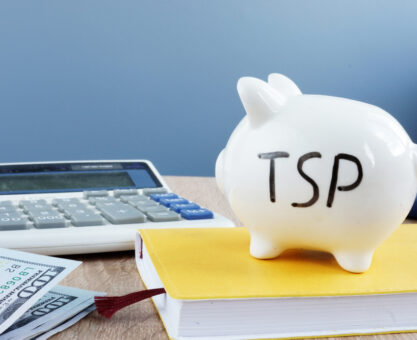When you first head into retirement, it’s important to understand how much is withheld from your TSP distributions for federal income taxes. Otherwise you may be hit with an unexpected tax bill and, possibly, a 10% IRS penalty. Adding to the pressure to get it right is the fact that the amount of taxes withheld on your TSP withdrawals varies depending on how you choose to withdraw your money.
A Lump Sum Withdrawal From Your Traditional TSP
If you choose the lump sum withdrawal option, the payment can be sent directly to you or it can be transferred (or rolled over) to an IRA or other qualified retirement plan. If your lump sum payment is sent directly to you, the IRS requires the TSP to withhold 20% for federal income taxes.
Will 20% be enough to cover the income taxes you’ll owe? It depends on your tax bracket in the year you make the withdrawal. It’s important to estimate your marginal tax bracket and request additional withholding if 20% is not enough. If you choose to transfer all or part of your tax-deferred balance into a traditional IRA or other qualified retirement plan, federal taxes on the amount are deferred until you withdraw funds from that plan.
“Keep in mind, if your monthly TSP payments are not expected to last at least ten years (fewer than 120 payments), federal taxes will be withheld at the 20% rate.”
Monthly Installment Payments From Your Traditional TSP
Equal monthly TSP payments are the most popular choice for federal retirees. No matter what amount you elect, the TSP will automatically withhold taxes from your payments as if you were married and claiming three (3) dependents.
Since it’s unlikely that most federal retirees would have three dependents, you can increase the amount withheld by completing the withholding portion of your TSP withdrawal form. Keep in mind, if your monthly TSP payments are not expected to last at least ten years (fewer than 120 payments), federal taxes will be withheld at the 20% rate.
Other Taxes You May Owe On Retirement Income
Considering your monthly annuity and Social Security are also subject to income taxes, it’s important to complete withholding forms for these benefits, too. When it comes to state income taxes on retirement income it depends on where you live. Though the TSP does not withhold for state or local income tax, it does report all TSP distributions to your state of residence if it has a state income tax.
Without professional tax planning, you may be hit with an unexpected “tax bomb” in retirement. Connect with an FRC® trained advisor who can put you in touch with a tax expert who understands how the TSP works.


























